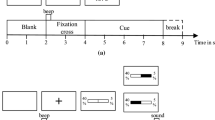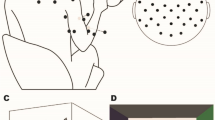Abstract
Voluntary motor performance is the result of cortical commands driving muscle actions. Corticomuscular coherence can be used to examine the functional coupling or communication between human brain and muscles. To investigate the effects of grip force level on corticomuscular coherence in an accessory muscle, this study proposed an expanded support vector regression (ESVR) algorithm to quantify the coherence between electroencephalogram (EEG) from sensorimotor cortex and surface electromyogram (EMG) from brachioradialis in upper limb. A measure called coherence proportion was introduced to compare the corticomuscular coherence in the alpha (7–15Hz), beta (15–30Hz) and gamma (30–45Hz) band at 25 % maximum grip force (MGF) and 75 % MGF. Results show that ESVR could reduce the influence of deflected signals and summarize the overall behavior of multiple coherence curves. Coherence proportion is more sensitive to grip force level than coherence area. The significantly higher corticomuscular coherence occurred in the alpha (p < 0.01) and beta band (p < 0.01) during 75 % MGF, but in the gamma band (p < 0.01) during 25 % MGF. The results suggest that sensorimotor cortex might control the activity of an accessory muscle for hand grip with increased grip intensity by changing functional corticomuscular coupling at certain frequency bands (alpha, beta and gamma bands).





Similar content being viewed by others
References
Aoife, F., & Leonard, O.’. S. (2013). Effects of grip type and wrist posture on forearm EMG activity, endurance time and movement accuracy. International Journal of Industrial Ergonomics, 43, 91–99.
Babiloni, C., Vecchio, F., Bares, M., Brazdil, M., Nestrasil, I., Eusebi, F., Rossini, P. M., & Rektor, I. (2008). Functional coupling between anterior prefrontal cortex (BA10) and hand muscle contraction during intentional and imitative motor acts. NeuroImage, 39, 1314–1323.
Bortel, R., & Sovka, P. (2006). EEG–EMG coherence enhancement. Signal Processing, 86, 1737–1751.
Caviness, J. N., Adler, C. H., Sabbagh, M. N., et al. (2003). Abnormal corticomuscular coherence is associated with the small amplitude cortical myoclonus in Parkinson’s Disease. Movement Disorders, 18, 1157–1162.
Chakarov, V., Naranjo, J. R., Schulte-Monting, J., et al. (2009). Beta-range EEG-EMG coherence with isometric compensation for increasing modulated low-level forces. Journal of Neurophysiology, 102, 1115–1120.
Cui, S. M., Liu, M. L., & Xin, S. (2007). Atlas of regional anatomy of the brain using MRI with functional correlations (pp. 59–60). Beijing: People’s Medical Publishing House.
Fang, Y., Daly, J. J., Sun, J. Y., et al. (2009). Functional corticomuscular connection during reaching is weakened following stroke. Clinical Neurophysiology, 120, 994–1002.
Halliday, D. M., Rosenberg, J. R., Amjad, A. M., Breeze, P., Conway, B. A., & Farmer, S. F. (1995). A framework for the analysis of mixed time series/point process data—theory and application to the study of physiological tremor, single motor unit discharges and electromyograms. Progress in Biophysics and Molecular Biology, 64, 237–278.
Halliday, D. M., Conway, B. A., Farmer, S. F., & Rosenberg, J. R. (1998). Using electroencephalography to study functional coupling between cortical activity and electromyograms during voluntary contractions in humans. Neuroscience Letters, 241, 5–8.
Hao, D. M., Qin, W., & Wu, C. S. (2010). Motor cortex networks in stroke patients during recovery with fMRI. Transactions of Nanjing Univer sity of Aer onautics & Astr onautics, 27(1), 55–61.
Johnson, A. N., & Shinohara, M. (2012). Corticomuscular coherence with and without additional task in the elderly. Journal of Applied Physiology, 112, 970–981.
Johnson, A. N., Wheaton, L. A., & Shinohara, M. (2011). Attenuation of corticomuscular coherence with additional motor or non-motor task. Clinical Neurophysiology, 122, 356–363.
Kamp, D., Krause, V., Butz, M., Schnitzler, A., & Pollok, B. (2013). Changes of cortico-muscular coherence: an early marker of healthy aging? Age, 35, 49–58.
Kayser, J., & Tenke, C. E. (2006a). Principal components analysis of Laplacian waveforms as a generic method for identifying ERP generator patterns: I. Evaluation with auditory oddball tasks. Clinical Neurophysiology, 117, 348–368.
Kayser, J., & Tenke, C. E. (2006b). Principal components analysis of Laplacian waveforms as a generic method for identifying ERP generator patterns: II. Adequacy of low-density estimates. Clinical Neurophysiology, 117, 369–380.
Kristeva, R., Patino, L., & Omlor, W. (2007). Beta-range cortical motor spectral power and corticomuscular coherence as a mechanism for effective corticospinal interaction during steady-state motor output. NeuroImage, 36, 785–792.
McClelland, V. M., Cvetkovic, Z., & Mills, K. R. (2012). Modulation of corticomuscular coherence by peripheral stimuli. Experimental Brain Research, 219, 275–292.
Mears, R. P., & Spencer, K. M. (2012). Electrophysiological assessment of auditory stimulus-specific plasticity in schizophrenia. Biological Psychiatry, 71, 503–511.
Mendez-Balbuena, I., Huethe, F., Schulte-Monting, J., Leonhart, R., Manjarrez, E., & Kristeva, R. (2012). Corticomuscular coherence reflects interindividual differences in the state of the corticomuscular network during low-level static and dynamic forces. Cerebral Cortex, 22, 628–638.
Meng, F., Tong, K. Y., & Chan, S. T. (2008). Study on connectivity between coherent central rhythm and electromyographic activities. Journal of Neural Engineering, 5, 324–332.
Meng, F., Tong, K. Y., Chan, S. T., Wong, W. W., Lui, K. H., Tang, K. W., Gao, X. R., & Gao, S. K. (2009). Cerebral plasticity after subcortical stroke as revealed by cortico-muscular coherence. IEEE Transactions on Neural Systems and Rehabilitation Engineering, 17, 234–243.
Ohara, S., Nagamine, T., Ikeda, A., Kunieda, T., Matsumoto, R., Taki, W., Hashimoto, N., Baba, K., Mihara, T., Salenius, S., & Shibasaki, H. (2000). Electrocorticogram–electromyogram coherence during isometric contraction of hand muscle in human. Clinical Neurophysiology, 111, 2014–2024.
Oldfield, R. C. (1971). The assessment and analysis of handedness: the Edinburgh inventory. Neuropsychologia, 9, 97–113.
Omlor, W. G., Patino, L., Balbuena, I. M., et al. (2011). Corticospinal beta-range coherence is highly dependent on the pre-stationary motor state. The Journal of Neuroscience, 31(22), 8037–8045.
Pozdnoukhov, A., & Kanevski, M. (2008). Multi-scale support vector algorithms for hot spot detection and modeling. Stochastic Environmental Research and Risk Assessment, 22, 647–660.
Rosenberg, J. R., Amjad, A. M., Breeze, P., Brillinger, D. R., & Halliday, D. M. (1989). The Fourier approach to the identification of functional coupling between neuronal spike trains. Progress in Biophysics and Molecular Biology, 53, 1–31.
Schoffelen, J. M., Oostenveld, R., & Fries, P. (2008). Imaging the human motor system’s beta-band synchronization during isometric contraction. NeuroImage, 41, 437–447.
Suresh, D. M. (2011). Temporal dynamics of primary motor cortex gamma oscillation amplitude and piper corticomuscular coherence changes during motor control. Experimental Brain Research, 212, 623–633.
Tatsuya, M., Shinji, O., & Takashi, N. (2002). Cortical–muscular coherence. International Congress Series, 1226, 109–119.
Ushiyama, J., Suzuki, T., Masakado, Y., Hase, K., Kimura, A., Liu, M. G., & Ushiba, J. (2011). Between-subject variance in the magnitude of corticomuscular coherence during tonic isometric contraction of the tibialis anterior muscle in healthy young adults. Journal of Neurophysiology, 106, 1379–1388.
Ushiyama, J., Masakado, Y., Fujiwara, T., Tsuji, T., Hase, K., Kimura, A., Liu, M. G., & Ushiba, J. (2012). Contraction level-related modulation of corticomuscular coherence differs between the tibialis anterior and soleus muscles in humans. Journal of Applied Physiology, 112, 1258–1267.
Witte, M., Patino, L., Andrykiewicz, A., Hepp-Reymond, M. C., & Kristeva, R. (2007). Modulation of human corticomuscular beta-range coherence with low-level static forces. European Journal of Neuroscience, 26, 3564–3570.
Yang, Q., Fang, Y., & Sune, C. K. (2009). Weakening of functional corticomuscular coupling during muscle fatigue. Brain Research, 1250, 101–112.
Yang, Q., Siemionow, V., Yao, W. X., et al. (2010). Single-trial EEG-EMG coherence analysis reveals muscle fatigue-related progressive alterations in corticomuscular coupling. IEEE Transactions on Neural Systems and Rehabilitation Engineering, 18, 97–106.
Acknowledgments
This research was partially sponsored by Natural Science Foundation of China (No. 81071231, 61175115 and 61370113), Beijing Natural Science Foundation (7132028&7132021), the Importation and Development of High-Caliber Talents Project of Beijing Municipal Institutions (CIT&TCD201304035), Jing-Hua Talents Project of Beijing University of Technology (2014-JH-L06).
Conflict of interest
The authors declare that they have no conflict of interest.
Author information
Authors and Affiliations
Corresponding authors
Additional information
Action Editor: Simon R Schultz
Rights and permissions
About this article
Cite this article
Rong, Y., Han, X., Hao, D. et al. Applying support vector regression analysis on grip force level-related corticomuscular coherence. J Comput Neurosci 37, 281–291 (2014). https://doi.org/10.1007/s10827-014-0501-0
Received:
Revised:
Accepted:
Published:
Issue Date:
DOI: https://doi.org/10.1007/s10827-014-0501-0




